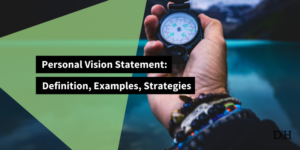Inadequate training and disengagement costs American companies as much as $500 billion every year. And a big part of the issue is a general lack of understanding of how to effectively plan and execute employee development.
Providing employees with opportunities to progress and become better is not just crucial for the company itself but also is an essential part of creating a positive and motivated business culture.
Unfortunately, company leaders are busy and pressured to achieve results, which sometimes makes them neglect essential employee development opportunities, with devastating long-term consequences.
To remedy that, let’s dive deep into the subject of employee development, covering what it is, why it matters, and some of the best practices you should implement in your company.
What is Employee Development?

Employee development is the process of advancing the skills and learning capabilities of the workforce. It can and should encompass all company levels and address challenges and growth opportunities for all of your employees.
Most effective employee development programs take a wide-scope approach, identifying both short-term and long-term growth opportunities and working with individual employees to find the best path forward in their situation.
Ideally, employee development should not be about going through the motions and checking off the box saying that an employee received training. Instead, it should be a collaborative process that aims to identify weak areas or most pressing challenges and then work with management on developing an effective plan of action.
The most successful companies recognize the importance of developing employees and take the task seriously. And in return, employees feel valued and are much more likely to show loyalty for the attention and career growth opportunities that their employer has provided.
Why is Staff Development Important?
Employee development comes with far-reaching benefits that might not always be immediately apparent. To really bring home the fact that focusing on developing your employees is worth it, let’s look at some of the biggest benefits it can offer below.
Boost Performance
The number one benefit of employee development is the boost in performance it can offer. After all, if you actively seek out ways to help your employees improve, the new competencies and skills they gain will translate into better performance, more autonomy, and improved results for your company.
This is especially important when you consider how competitive most markets have become. If your productivity levels stagnate for even a few years, keeping up with up-and-coming competitors and new players coming into the market will become an increasingly difficult challenge.
Meanwhile, as you restructure your employee development practices and start progressing together with your team, the results will accumulate. The time or resources you invest will come back tenfold in the results you can expect and the breakthroughs that can occur.
Your employees will become more independent, allowing you to adopt a better delegation model in your leadership and gain more time for yourself as well.
Identify Future Leaders

Another powerful benefit of employee development is that it will help you identify the most suitable people for taking over leadership positions in the future.
When you identify them, the development opportunities you create can be geared towards preparing the people in your company to become great leaders and managers who continue to guide your company in the right direction.
When you know that there are competent and ready people on all levels of your company, promoting people becomes much easier. Not just because you have more qualified people to choose from for a position, but also because you know others are just as ready to take their place.
Improve Employee Retention
Lack of growth opportunities and challenges is one of the top reasons for employees deciding to leave a company and look for another job. And when you consider that most companies don’t have a structured process for helping employees move forward, that’s not surprising.
But if you work with each employee and try to help them find an exciting career path within your company, you will massively increase the chances of them wanting to stay with you long term.
Sure, other aspects like personal priorities and salary also play a significant role in employee retention. But businesses that pay attention to their employees’ needs and try to look at development opportunities from their perspective usually see a considerable boost in the number of people who decide to stay long term.
Develop a Better Company Culture
Finally, the continuity that comes from retaining your top talent and helping them progress will also inevitably lead to a better company culture, which will permeate through the entire organization and produce powerful outcomes that might not even be immediately visible.
From a company’s perspective, working with the same team for a long time will always be a much better proposition. Onboarding and integrating new employees is always a challenge, no matter how talented they might be.
Meanwhile, when teams remain intact for a long time and develop deeper relationships, that tends to create cohesion and effectiveness that can’t really be measured, resulting in a workplace dynamic that nurtures innovation, productivity, and unique insights into how your company could move forward.
Employee Development: Best Practices
At this point, we’ve firmly established why employee development is always worth the effort. But the next question is – how can you develop effective practices that consistently deliver good results?
Even though the process isn’t easy, it can be broken down into a few key steps you can work through. These steps will help you understand the needs of your employees in the context of your business goals and help keep employees happy and engaged long term.
Start with Your Business Goals
Any employee development program will only be as effective as it is aligned with what your company aims to achieve. Therefore, you should start by thinking about how developing employees could help move your company forward and what obstacles it could help to overcome.
And this requires a plan that encompasses multiple considerations.
First, consider the types of leadership roles you want to develop and potential candidates to fill them. When you approach employee development from the point of leadership, you can set priorities accordingly and set up a continuity process to avoid disruptions in the future.
You should also think about how improving employee development will enhance your company culture and set up a program that will consider your employees’ needs on an individual level.
Finally, consider the specific goals and benchmarks you want to reach both the short and the long term. By knowing the areas that are important, you can allocate resources accordingly and try to raise competencies there first.
Listen to Feedback

The only way to make your employee development program effective is to base it on the actual needs of your employees. Each company is different, so it’s safe to say that every employee within a company is different as well, which is something you need to adjust and prepare for when putting together a comprehensive strategy for training.
The best way to address this is to be open to feedback from your employees. On a company level, that means running surveys and encouraging suggestions from everyone, which will provide you with plenty of insights about what types of growth opportunities your team prioritizes.
In the 68th episode of the How We Solve Podcast, Sean Li talks with Darren Reinke about the importance of being willing to change and become a better leader based on self-reflection and feedback. And that requires being proactive about how you collect and accept feedback.
To really get the most from the process, you might want to consider talking to the individuals as well. The fastest path to growth is listening to each person’s priorities and challenges and then developing a plan that will encompass those things into their path to growth.
Look into Professional Development Programs
If you’re creating the development program from scratch, chances are that you won’t be able to make everything work on your own. Developing employees is a complex process with many considerations, so it takes time to develop and implement practices that will actually deliver the results you expect.
Luckily, you don’t have to take everything on alone. You can consult with companies that specialize in developing effective programs for training and guiding your employees. These companies have years of experience and thousands of clients, which allows them to provide tailored solutions proven to work in your situation.
Obviously, these services are not mandatory, and if you’re confident that you can develop a program on your own, they might not even be necessary. But at least exploring the available options and considering how they might improve outcomes in your company might be a good idea.
Provide Individual Growth Opportunities
As an employee, you must have a strong focus on your business goals. But in terms of employee development, those goals can usually be aligned with the needs of your employees.
That’s because when your employees have the right growth opportunities in your company, that creates a ripple effect, providing numerous benefits that help your company grow and prosper.
For one thing, when you create a personalized path for growth that each employee can get on board with, you know that they will be motivated to pursue those growth opportunities. That means they will be more likely to excel at their roles and advance, since it’s a career path they desire.
Another benefit is that since you’re catering to your employees’ needs, they will be much more likely to stay with your company for longer. Employees want development and growth opportunities, but only if they are aligned with how they see their career trajectory going forward.
Talk to each employee and don’t rely on cookie-cutter development solutions. You can find the right learning tools, the right pace for training, and start thinking about the next position the person could take well in advance, which will help your company accurately estimate how to fill roles before they even open up.
Bottom Line
Employee development is one of the best ways to ensure your company has continuity and can promote internally to fill critical roles. At the same time, it’s also a great way to keep your employees happy and attract top talent from other companies.
How does your company approach employee development? And what do you think are the most overlooked aspects of developing employees? Share in the comments below!




